Statin Side Effects: How to Reduce Them
It is no surprise to us that cardiovascular disease tops the list of killers in the world. Every one of us knows at least one other person in our families that has been affected by a heart condition. In 2013, Statistics Canada estimated this second-leading cause of death to affect more than 2.4 million Canadians.[1] This number is expected to increase over the next few decades, as the effects of sedentary office jobs and unhealthy eating patterns take their toll.
Cardiovascular disease is a broad term that encompasses any disease affecting the heart and its blood vessels. This includes coronary artery disease, strokes, heart attacks, angina, and peripheral vascular disease.
Many of us are aware of the dangers of heart attacks and strokes. We learn the early warning signs and are versed on how to manage the symptoms in case of emergency. However, many of us are less knowledgeable on the topic of peripheral vascular disease (PVD), a silent and potentially life-threatening disease that affects much more than just the heart.
Peripheral vascular disease affects the blood vessels outside of the heart, such as the legs, arms, fingers, and toes. Similarly to other cardiovascular diseases, PVD involves the buildup of cholesterol along the walls of artery, a process known as atherosclerosis. This narrows the opening and restricts blood flow through the vessels. While you may think this is less harmful than a heart attack, restricting blood flow to the hands—or even the brain—can significantly reduce function if the blockage is even just to a small degree. Symptoms of developing PVD include:[2]
- Painful cramping in legs and hips, even after minimal activity such as climbing stairs;
- Leg numbness and tingling;
- Coldness of the limbs, or a change in colour of the limbs;
- Hair loss, shiny skin, or slower nail growth on the limbs; and
- Erectile dysfunction.
It is important to note that many forms of PVD present with no symptoms. However, anyone with a family history of cardiovascular disease should undergo a full assessment by the age of 65. This assessment should include a test of all pulses in the arms and legs, bloodwork for cholesterol, and perhaps even diagnostic testing for cardiovascular efficiency (such as a stress test). Many medical doctors are quick to put their patients on cholesterol-lowering medications for preventative purposes, but are not always quick to explain the risks and side effects.
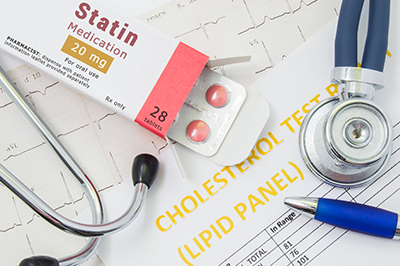 History of Statins
History of Statins
It is estimated that up to 90% of cardiovascular disease may be preventable.[1] Research has long been focused on the development of drugs to help support heart function and prevent the buildup of artery-clogging factors. The most common class of medications are statins and include the drug names Lipitor®, Crestor®, Lescol®, and Altoprev®.[3] With the number of cardiovascular disease cases in the country, it is no surprise that Crestor ranks as the second most prescribed medication according to WebMD.[4]
Back in the 1950s, cholesterol and atherosclerosis were new terms in the research world. Scientists began to investigate how cholesterol was made in the body and found that heart attacks were correlated with high levels of unhealthy LDL cholesterol and low levels of good HDL cholesterol.[3] Other than what came in through the diet, cholesterol could be made by the liver to support the basic and essential hormone functions in the body.
When dietary needs for cholesterol are met, liver function is suppressed naturally to prevent an overflow of cholesterol. The particular enzyme involved in making cholesterol in the liver is known as HMG-CoA reductase. Researchers decided if there was to be a drug to reduce cholesterol, the best way to do it would be to inhibit this enzyme and suppress the liver’s ability to make cholesterol: Thus began the production of statins.
After many years of research and animal testing, the first statin hit the shelves in the late 1970s. It was shown to reduce unhealthy LDL cholesterol without making any change to good HDL cholesterol. This definitely seemed like a win for the medical community. Today, statins have been tested in over 90,000 humans followed for five years.[3] The results are consistent in lowering cholesterol and have increased the lifespan of over 30 million people. However, most of these people are on statins for much longer than five years, and little is known of its long-term effects. As naturopathic doctors, we see the medical benefit as well as the side effects and risks. It is important that we always consider these concerns when working with a patient on statins.
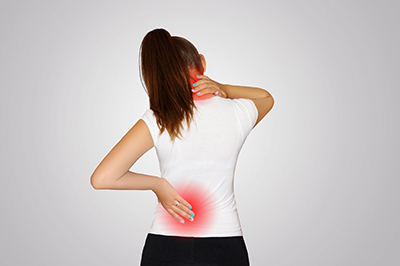 Muscle Pain
Muscle Pain
This could also be classified as weakness, numbness, and soreness in the muscles. It can range from mild discomfort to complete inability to perform daily tasks. This happens because the statin drugs cause small amounts of muscle breakdown in a process called rhabdomyolysis.[3] Your doctor will run bloodwork to check levels of creatine kinase, an enzyme released when muscle breaks down. If your levels are high, your doctor may consider switching you to another statin.
Liver Damage
As discussed, most cholesterol is made in the liver and the function of the statin drug is to decrease the production of cholesterol in the liver. This means the statin is directly targeting the liver, which can result in inflammation and damage. While this effect might be rare, your doctor should periodically check your liver enzymes and educate you on the signs of liver disease. These can include low appetite, changes in colour of urine and stool, pain in the upper abdomen, and yellowing of the eyes.
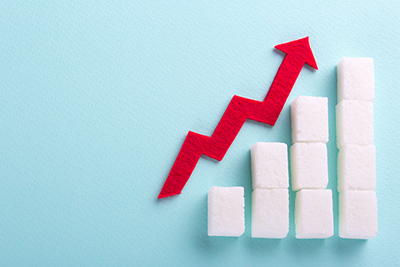 Increased Blood Sugar
Increased Blood Sugar
A mild increase in blood sugar has been noted in patients taking statin medications. This effect may or may not be significant, depending on the individual’s family and personal history. Caution should be taken in those currently being treated for diabetes, as medication doses may have to be adjusted for statin use.
 How A Naturopathic Doctor Can Help
How A Naturopathic Doctor Can Help
Nutrition
Very little medical support is given to the nutritional and preventative aspects of care, making thousands of patients reliable on medications with very little accountability in their day-to-day lives. As mentioned previously, the statin drug prevents the liver’s ability to produce cholesterol: It does not change anything about the amount of cholesterol coming into the body, nor does it improve the liver’s ability to detoxify the amount of cholesterol already existing in the body. A diet plan should be given to every person with high cholesterol, whether they are on medication or not. Many people think cholesterol only comes from eating fried and fatty foods, but our bodies are smarter than that. Cholesterol is essentially a storage form of fuel. Anything we consume in higher amounts than we are using gets stored in the body as fat. Drinking too much alcohol or consuming high amounts of refined carbohydrates and sugars are equally responsible for increasing cholesterol levels.
Exercise
This one goes without saying. Strengthening the heart includes a cardiovascular exercise plan and regular activity. Exercise supports circulation around the entire body, including the liver. This helps to eliminate toxins through the skin, bowels, and bladder, all while burning off excess toxins stored in our fat tissue.
Coenzyme Q10
This antioxidant is present in the highest concentration in all muscles, and specifically the heart muscle. Statins are known to lower levels of CoQ10, and this may even contribute to muscle pain and breakdown that results.[5] A naturopathic doctor (ND) will assess all medications you are on and consider if CoQ10 is a suitable addition to your treatment plan.
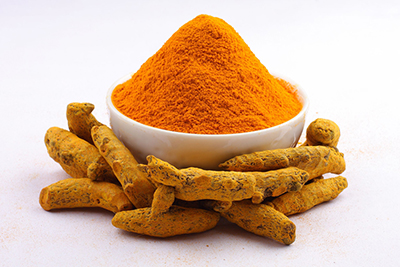 Turmeric
Turmeric
Atherosclerosis and cholesterol buildup are inflammatory processes. Turmeric is a powerful liver stimulant and anti-inflammatory compound. It can help support the digestive tract while its bitter properties strengthen the gallbladder-liver connection and expel bile for fat digestion.
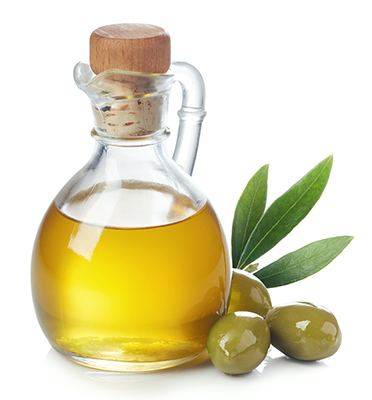 Olive Oil
Olive Oil
Who would have thought that consuming more fats would help to lower cholesterol? The truth is, we need cholesterol. Most of our hormones are derived from cholesterol, which means we need it to function every day. But we need the good kinds of oils in our diets to help us make the good kind of cholesterol. Olive oil is full of essential healthy fats that will stimulate our liver and help our bodies make more of the good cholesterol.
Vitamin B12
Like everything else in the body, cholesterol has a specific set of steps for it to be made, and another set of steps for it to be broken down. Vitamin B12 is an important step in the breakdown of cholesterol, and without it, the entire production line comes to a halt. It is interesting to note that vegans and vegetarians may end up with high cholesterol even though they don’t eat meat. This is because their diets are often low in vitamin B12, which can inhibit the body’s ability to break down excess cholesterol. Get your B12 levels checked; this one is an easy fix!
Conclusion
As with all health concerns, cholesterol management is an individual thing. Each person requires their own set of guidelines specific to their dietary, cultural, and lifestyle habits. Making these changes is not easy, but the beauty of natural medicine is that it works forever and teaches us so much more about our bodies.
 Dr. Krysten DeSouza, ND
Dr. Krysten DeSouza, ND
Krysten is a Mississauga naturopathic doctor, with a special interest in anxiety disorders and mental health. She believes in the power of the mind-body connection and that managing mental health should take a whole-body approach.
desouzanaturopathic.com
References
- Public Health Agency of Canada. Heart Disease in Canada: Highlights from the Canadian Chronic Disease Surveillance System. · https://www.canada.ca/en/public-health/services/publications/diseases-conditions/heart-disease-canada-fact-sheet.html · Updated 2017-07-18.
- Mayo Clinic Staff. Peripheral artery disease. · https://www.mayoclinic.org/diseases-conditions/peripheral-artery-disease/symptoms-causes/syc-20350557 · Updated 2021-01-14.
- Endo, A. “A historical perspective on the discovery of statins.” Proceedings of the Japan Academy. Series B, Physical and biological sciences, Vol. 86, No. 5 (2010): 484–493.
- Brown, T. “The 10 most-prescribed and top-selling medications.” WebMD. · https://www.webmd.com/drug-medication/news/20150508/most-prescribed-top-selling-drugs · Posted 2015-05-08.
- Deichmann, R., et al. “Coenzyme Q10 and statin-induced mitochondrial dysfunction.” The Ochsner Journal, Vol. 10, No. 1 (2010): 16–21.

 Stores
Stores